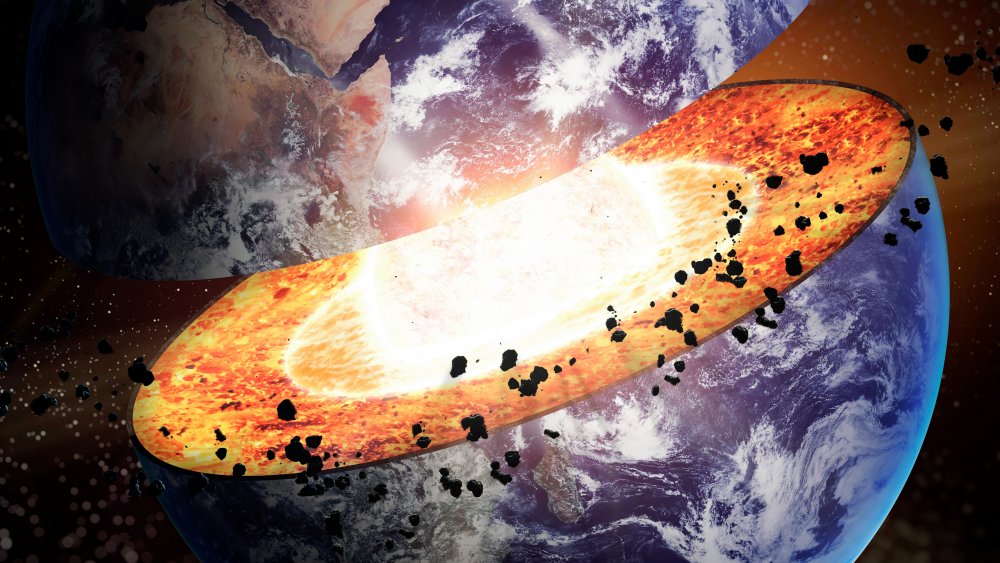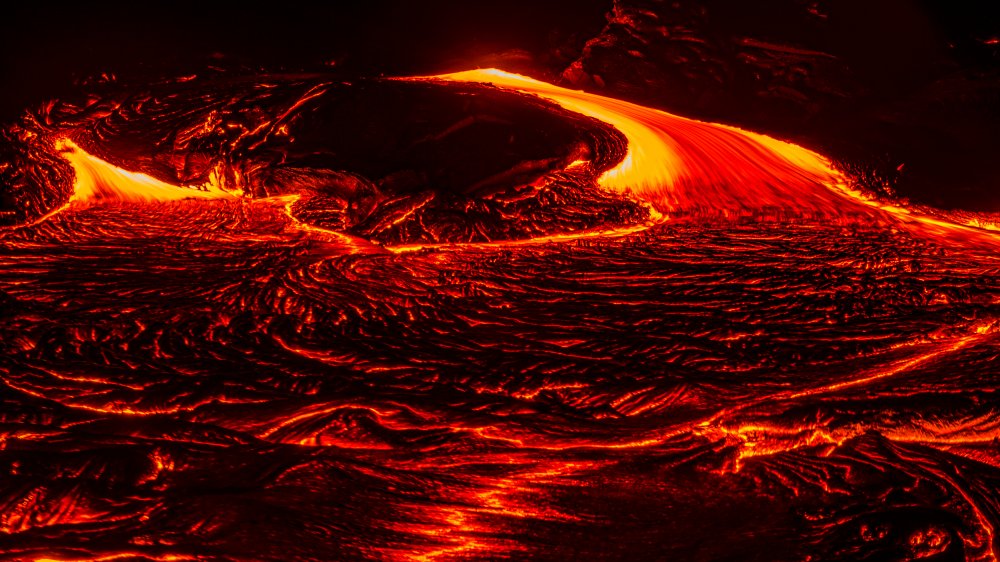The Reason The Earth's Core Is So Hot
One of the many rites of childhood is digging a hole in the hope you'll eventually end up in China. Or America, if you happen to be, you know, a kid in China. Later in life, you learn that even had you possessed the stamina to dig a hole 7,950 miles deep (depending on your location), the task would become more and more difficult the closer you got to the Earth's core until it would eventually become too hot to continue. That's because the Earth isn't dirt all the way through — in fact the dirt and rock that make up Planet Earth's crust only go down about 19 miles. Under the crust, there are four additional layers — the upper mantle, the lower mantle, the outer core, and the inner core, and those parts of the planet are pretty inhospitably hot. Even the crust gets pretty warm in places — up to 1600 degrees as you start to approach the mantle.
Why it's so danged hot down there
So why after all these billions of years is the Earth still so hot inside? Well, according to Scientific American, the process of building a planet generates an awful lot of heat — around 18,000 degrees Fahrenheit — and it takes a really long time for heat to escape through all of the Earth's many layers of material. So the planet has retained most of the primordial heat left over from billions of years ago. Meanwhile, heavy materials like iron sink down to the Earth's core, generating frictional heat en route — up to 3000 degrees Fahrenheit. There's also some heat generated as radioactive material decays, though the amount of heat that radioactive decay contributes to the temperature of the Earth's core is kind of an unknown quantity.
The outer layers of the Earth act as a sort of insulating blanket, which prevents too much of that inner heat from escaping, so the core is likely to remain hot for a very, very long time. So to sum up, don't try digging to China (or America) any time soon.

